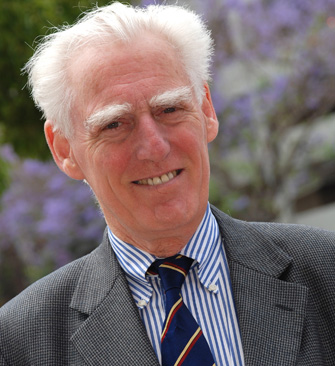Philip J. Stephens Award
Background on the Philip J. Stephens Award
The Philip J. Stephens Award was established in 2014 by the International Steering Committee of the conference series on Vibrational Optical Activity (VOA) at the VOA-4 meeting in Baoding, China. The award was presented for the first time at the VOA-5 conference in Antwerp, Belgium in September 2016 and honors Philip J. Stephens as a leading founder of the VOA field with particular influence on vibrational circular dichroism (VCD) measurement and theory, who sadly declined and passed away at the height of his of scientific career as VCD, and its companion technique Raman optical activity (ROA), were gaining substantially greater world-wide awareness and application.
In order to distinguish this award from those in more established fields, and to place greater emphasis on encouraging the creative development of VOA as field, the award is presented at each VOA conference to the authors of the paper judged to be most deserving that was published in the two calendar years prior to the conference.
For the upcoming VOA-8 Conference, anyone may nominate only one paper published in the calendar years 2022-2023 that deals with some aspect of VOA. Nominations are collected on-line by filling out a short form, and will be reviewed by the International Steering Committee after the deadline (to be decided), and a winner will be decided by their vote.
The designated author of the paper will present the Philip J. Stephens Award Address at the VOA-8 conference in Bochum, Germany, and receive support for travel and accommodation expenses. All authors of the award paper will receive a framed certificate commemorating the award.
Philip John Stephens

Photo by Alexandra Bissonnette, courtesy of USC Dornsife.
Philip John Stephens was born on 9 October 1940 near Birmingham, England and died on 31 July 2012 in Los Angeles, California where he had been Professor of Chemistry and faculty member at the University of Southern California starting in 1967. Philip’s research interests spanned two fields, magnetic circular dichroism (MCD) centered primarily on transition metal complexes and their electronic transitions and vibrational circular dichroism (VCD) for infrared vibrational transitions. He developed the fundamental equations for MCD as part of his D.Phil. at Oxford University in 1964 studying with Professor A.D. Buckingham, and his research utilizing MCD, particularly for metalloproteins, continued throughout his career.
His contributions to VCD started in 1975 with the confirmation of the then very recent discovery of VCD in a chiral organic molecule by the groups of George Holzwarth and Albert Moscowitz at the Universities of Chicago and Minnesota. Due to the superiority of the Stephens VCD spectrometer, the first full paper on VCD covering a wide variety of chiral molecules was published in 1976 by Larry Nafie, Tim Keiderling and Philip.
The most significant of Philip’s contributions during this period of development was the magnetic field perturbation (MFP) theory for calculating VCD spectra and by comparison to experimental results determining absolute configuration. These methods were subsequently enhanced, particularly with density functional methods, and implemented in the commercially available Gaussian series of programs, that are broadly used today for calculation of VCD spectra. In his final years, Philip pioneered the combined use of VCD, optical rotation and electronic CD for the determination of absolute configuration of wide classes of chiral molecules including natural products.
Many of us will long remember with deep appreciation Philip’s many lucid lectures on the theory, measurement and application of chiroptical spectroscopy.
For those interested in learning more about Philip Stephens, a superb biographical memoir has been written by colleagues Andrew J. Thompson and Laurence D. Barron for the Royal Society a year after Philip’s passing.
“Philip John Stephens. 9 October 1940 − 31 July 2012”, Biogr. Mems Fell. R. Soc. 2013 59, 359-382.
On a more technical level a special issue of Theoretical Chemistry Accounts, Volume 119, January 2008, was a Festschrift in Honor of Philip J. Stephens on the occasion of his 65th birthday, which includes a biographical introduction by former graduate student Gerald M. Jensen and former postdoctoral associate Karl J. Jalkanen, and a detailed Scientific Memoir written by Philip himself covering his entire career and all publications and submitted manuscripts up to the time of the memoir.
